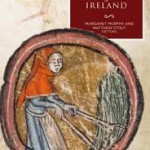
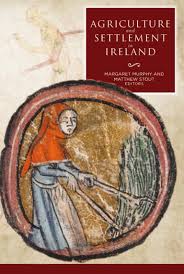 If you are looking for a book that covers Irish farming from the 5th century (before the days St Patrick banished the snakes from Ireland!) to within the last couple of centuries, Agriculture and Settlement in Ireland is the book for you. Edited by Margaret Murphy and Matthew Stout, there’s much to enjoy and discover as the writers analyse statistics, maps, letters, receipts and much more from all over Ireland’s history.
If you are looking for a book that covers Irish farming from the 5th century (before the days St Patrick banished the snakes from Ireland!) to within the last couple of centuries, Agriculture and Settlement in Ireland is the book for you. Edited by Margaret Murphy and Matthew Stout, there’s much to enjoy and discover as the writers analyse statistics, maps, letters, receipts and much more from all over Ireland’s history.
There’s so much to cover so I’m going to pick out a few of my favourite nuggets:
Raymond Gillespie: The changing structure of Irish agriculture in the seventeenth century
Apparently analysis into Irish agriculture of the seventeenth century has been scant so Gillespie is addressing that absence. I thought the increase in exports during that century was fascinating. 16 live animals arrived in Chester from Ireland in 1607 but that increased to 15,814 by 1639. By the 1680s the export of live cattle dwindled but barrelled beef and butter had increased, probably as a result of the Cattle Acts of the 1660s. Cattle were being slaughtered earlier than in previous centuries which suggests a move from keeping older cattle for milk towards using meat as main output. Cows gave milk for only six months of the year, one bull was “enough” for twenty cows (now the max would be about forty).
The labour requirements were interesting too, and even then, it sounds like dairy farmers struggled a bit with the life/ work balance. More investment was needed on dairy farms, equipment and buildings for making butter and cheese, one man and three dairy women were needed to manage twenty cows. That was compared to one man managing 100 suckler cows or 1000 sheep. Cattle were often reared in open areas and then sold in the autumnal fairs.
The population doubled during this century. Potatoes became important for feeding poorer people and were also used for breaking up reclaimed boglands. After potatoes were grown, then dung, straw and shells were applied before the land was tilled for barley.
Brendan Riordan: Farming and Settlement – some dynamic relationships
What I found particularly fascinating in this chapter was how the Cistercians monks in the twelfth century used improved ploughs and the ‘short rotation’ to replenish nutrients. Wheat was usually planted first on rested ground, then barley, oats, rye or buckwheat. Field peas and beans were used as utilised nitrogen. Livestock was often let onto the land after harvest and before sowing to replenish nutrients too. The Cistercians also introduced haymaking to provide winter food for their cattle and therefore, they also introduced the scythe.
Katharine Simms: The origins of the creaght – farming system or social unit?
A creaght is a combined herd of miscellaneous livestock on the move with its herders. Cattle were driven from winter fields to summer shielings in the hills in the 13th and 14th centuries. What I found really interesting in this chapter was the information on Ireland’s exports through the centuries. In the 15th century, it seems the chief exports were fish, tanned hides, furs, wool, linen and Irish cloaks. There was little trace of butter, bacon or meat in the records of Irish overseas trade for that time. The ‘Waterford Cloak’, a shaggy Irish woollen cloak, is listed among the chief exports in 1434. The average price of a cow in 1212, by the way, was three shillings and four pence.
Margaret Murphy: Manor centres, settlement and agricultural systems in medieval Ireland, 1250-1350
There’s lots of interesting information on the manor centres, particularly that of the importance of dovecots. The right to keep doves was a seigneurial prerogative. They provided luxury items for lordly tables and displayed the power and privilege of the manorial lord. Doves were eaten young in the summer and autumn. Warrends were also part of the paraphernalia of rural lordship. The value of the warren was calculated by the quantity of food they supplied for the household.
The term ‘haggard’ was in use from 1212 and was used to describe the agricultural buildings and yard for the manor centre. Sheaves of corn were brought to the haggard where they were bound and heaped into stacks and then protected from the elements.
There’s a lot of information in this book and just as I do with short stories, I tended to read just one or two chapters at a time so it took me a while to read it. I was delighted to receive this from Four Courts Press to review and I would really recommend it to anyone who is interested in Irish social and farming history. It is well researched and the writing style is very accessible with reams of information within each chapter. There are so many nuggets of information on so many different parts of Ireland, I know my dad will be especially interested in the study on Fenagh, Co. Carlow as he lived near there as a boy.
Another book I’d recommend is Irish Farming Life which I reviewed last year. Both will go down well as gifts for anyone interesting in Irish farming history.






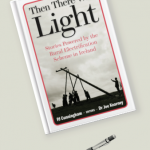
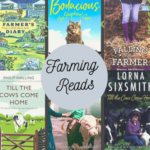
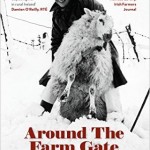
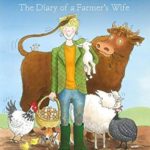
Clare
This looks an interesting book, Lorna. Definitely one for my list for next year! If it’s anything like as good as Irish Farming Life, I know I shall enjoy it.
It’s fascinating how early people exported goods, and what those goods were. I’m surprised at the number of cows being exported in the seventeenth century – presumably mostly to the UK, although it’s hard to understand why they would need them, as I would have thought they’d be self-sufficient with livestock. I also can’t help but feel sorry for how they must have been transported – I shudder to think about the horrendous journeys they had to undertake!
I’ve not heard of a Waterford cloak – I wonder if there is a modern-day version. It sounds just what I need for going out to feed the animals on a cold morning!
Lorna Post author
I know Clare, I hadn’t considered that exports started so early, I presume the beef in the barrels was salted to preserve it and of course, yes, live export too. A long walk for cattle either side of the Irish sea! I hadn’t heard of those shaggy woollen cloaks either but it sounds like they remained fashionable in certain circles for a few centuries.